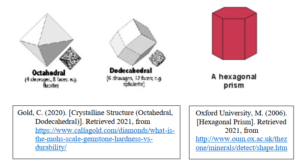
SPINEL
This gemstone, found in the mines of Sri Lanka, Myanmar, and Madagascar, is often
mistaken for rubies (red) or sapphires (blue) due to its red hues or blue hues.
However, this gemstone has also been discovered in the various shades of pink, green,
yellow, brown, black, or violet (uncommon). On the Mohs scale, a spinel can be found
to measure a solid 8, just after the diamond and the mineral corundum (sapphires and
rubies), with a specific gravity of 3.5 – 4.1.
The gemstones, spinels, rubies, and sapphires, with similar hues are also formed in
similar geographical conditions (all are aluminum oxides) – with the exception being
that spinels additionally contain magnesium. These stones can be further classified by
their typical crystal forms. Spinels form octahedrons or dodecahedrons whereas the
corundum only forms hexagonal prisms.

Artificial counterparts of spinels can be lab produced and are known as synthetic
spinels. One can differentiate between an artificial spinel from a natural gemstone by
putting it under a UV radiation light. If the stone is glowy, that means it’s synthetic
and not natural. Synthetic spinels are made to imitate natural spinels as well as other
popular gemstones such as aquamarine, zircon, tourmaline, emerald, chrysoberyl,
sapphire and ruby. The colors were produced through the addition of trace amounts of
metals into the stone: cobalt oxide (blue), manganese (yellow), chromium oxide
(green), and iron (pink).
Gemstone